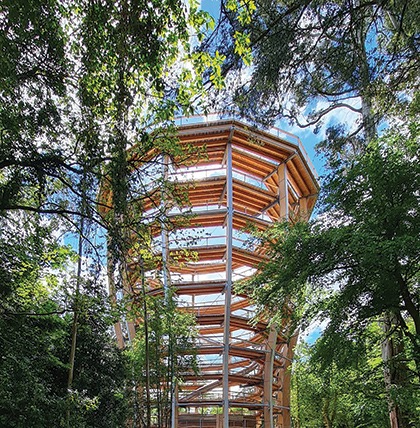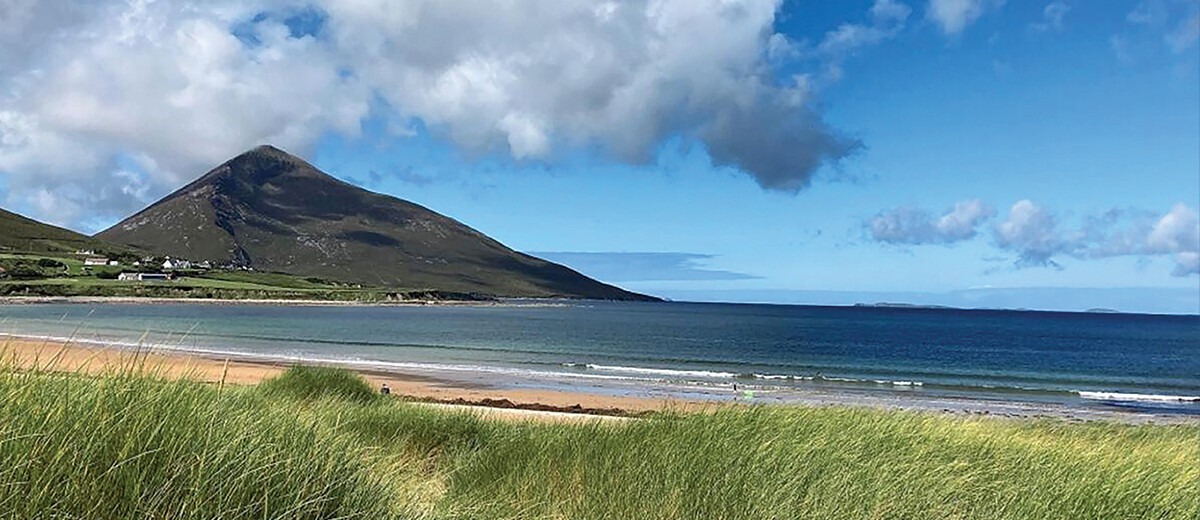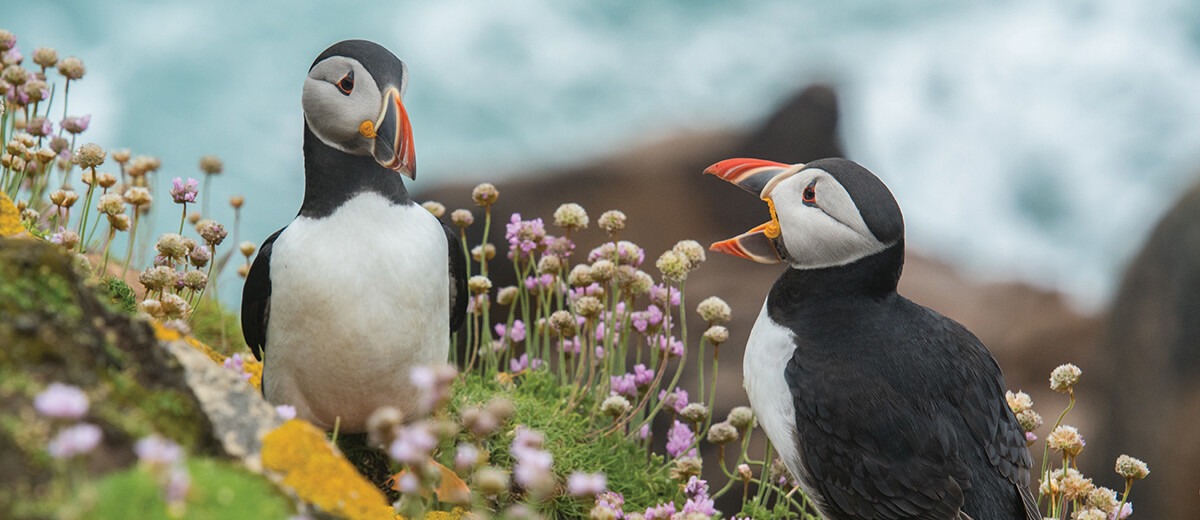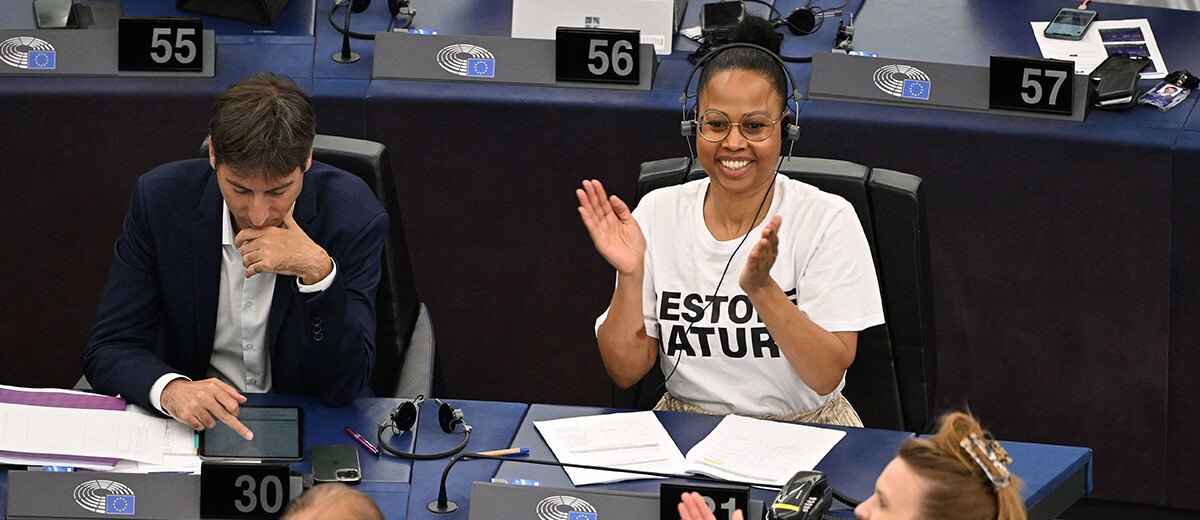As temperatures reached record levels across the world, terrifying images of burning landscapes in Europe and wildfires and toxic ash in North America, coupled with the deluges of rain we experienced at home in Ireland, the summer months brought the realities of global warming home to all but the most die-hard of climate deniers.
Amidst these sobering reports, there was good news in the passing of the EU’s Nature Restoration Law, a core pillar of Commission president Ursula von der Leyen’s European Green Deal, after months of heated debate and an opposition campaign scientists criticised as misleading.
“The EU is a world leader in developing this legislation,” says PROFESSOR TASMAN CROWE, UCD’s Vice President for Sustainability. “It is a big step forward and sets an important precedent.” Opposition to the law argued that it would hurt food security and punish producers already damaged by the pandemic, war in Ukraine and energy crisis, with the farming lobby claiming the law was ill-prepared, lacked a budget and would be unimplementable for farmers and forest owners.
Scientists disagreed that restoring nature would be bad for food and the economy, with an open letter signed by 6,000 scientists highlighting studies showing that restoring nature would improve food security, help fisheries, create jobs and save money.
The Nature Restoration Law comes at a time when Europe’s nature is in bad health with more than 60% of its soils categorised as unhealthy and 81% of habitats in poor condition. The abundance of farmland birds has halved in the past 40 years, and one in three bee and butterfly species are in decline.
The Nature Restoration Law will place recovery measures on 20% of the EU’s land and sea by 2030, rising to cover all degraded ecosystems, in particular those with the most potential to capture and store carbon and to prevent and reduce the impact of natural disasters, by 2050.
“The EU is seeking to build up Europe’s resilience and strategic autonomy, prevent natural disasters and reduce risks to food security.”
This is the first continent-wide, comprehensive law of its kind and a key element of the EU Biodiversity Strategy. Restoring wetlands, rivers, forests, grasslands, marine ecosystems, and the species they host will help increase biodiversity and secure the things nature does for free, such as cleaning our water and air, pollinating crops, and protecting us from floods.
By taking these important steps towards limiting global warming to 1.5°C, the EU is seeking to build up Europe’s resilience and strategic autonomy, prevent natural disasters and reduce risks to food security.
“Biodiversity provides a wealth of essential public goods and services including clean air, water, pollination, and soil fertility,” explains Minister for Agriculture, Food and the Marine, CHARLIE MC CONALOGUE (BA History and Politics 2000). “Our farmers, foresters and fishers rely on and manage these goods and services for their livelihoods.”
The passing of the Nature Restoration Law by the European Parliament paves the way for the final stage of negotiations – ‘trialogues’ – between the European Commission, the Council and the Parliament. While the detail of the Nature Restoration regulation is under negotiation at EU level, Minister McConalogue says that supporting environmental delivery is necessary across all sectors of society to protect future generations and a cornerstone of the Food Vision 2030 strategy.
“My Department is already delivering key actions to support biodiversity, climate change mitigation and improvements in water quality, and Ireland’s CAP Strategic Plan 2023-2027 will support Irish farm families in contributing to our climate and environmental ambitions while continuing to produce safe, sustainable food,” says the Minister.
Farmers are lobbying for substantially increased funding to compensate them for the changes they are being asked to make. Minister McConalogue points to specific supports already introduced by his Department, including the new national agri-environmental scheme, ACRES, which integrates locally led and results-based approaches to deliver greater impact, increased funding for organic farming and continued support for European Innovation Partnerships, a novel approach based on supporting local teams to develop and implement local actions.
“The Nitrates Action Programme which commenced last year introduced significant changes to reduce the loss of nutrients from agriculture to water,” says Minister McConalogue, “and farmers have made significant efforts to address water quality, however it will take time before the impact of these changes becomes visible in our water data.” Professor Crowe says that now that we know that the legislation is going ahead, the discussion will be around the details. “There will be wrangling and pushback from sectoral interests,” he predicts. “In the past, incentives were geared towards intensification, so there is a level of sympathy towards farmers who are now being asked to do the opposite. There is a fine balancing act between the provision of funding and allowing farmers who want a say over their own land a degree of self- determination.” Forestry is another sector in which the Nature Restoration Law is controversial. The Minister points to his Department’s proposed Forestry Programme which aims to deliver more diverse forests to meet economic, social, and environmental objectives.
Coillte is Ireland’s state-owned forestry business, managing 7% of the country’s land and responsible for innovative projects such as the ‘Beyond the Trees’ visitor destination at Avondale, Co. Wicklow, a €19 million project overseen by the company’s Head of Recreation, DAITHI DE FORGE (BAgrSc Forestry 1994).

Coillte says that it supports the need to restore and enhance biodiversity, and is focused on balancing and delivering the multiple benefits of forests for climate, nature, wood and people. It says it works carefully with nature in all of its forests and lands to protect important species and habitats, with biodiversity areas that are a mix of forested and open habitats from native woodlands to broadleaved and mixed forests to conifer forests, and open habitats including areas of uplands, heaths and bogs.
Of the 440,000 hectares under management by Coillte, 20% is managed primarily for nature, with the biodiversity value increased through enhancement and restoration projects. Coillte’s ambition is to increase this to 30% by 2025 and to 50% in the long term.

Fishing is also impacted by the Nature Restoration Law, with fishers saying it is not possible to decarbonise the fleet and protect the environment as the EU wants using existing funding.
Minister McConalogue points to the Marine Strategy Framework Directive with measures including the Landing Obligation, Multi-Annual Plans, and the Clean Ocean Initiative to remove plastics from the seas, as one of the main mechanisms currently delivering environmental protection.
It is clear that the Nature Restoration Laws are controversial and it is clear there is work to be done in garnering support from those in the farming, forestry and fishing communities. The challenge now is to develop common ground between those whose livelihoods are most impacted and NGOs, businesses, scientists and the public to develop a National Restoration Plan that will benefit people and nature in Ireland.
The possibility of a Nature Fund at the national level that is separate to the CAP in order to underpin the implementation of long-term restoration is something which the Government is under pressure to introduce, with 71% of Irish people wanting the Nature Restoration Law, according to a recent Ireland Thinks poll and research showing that every euro invested into nature restoration brings €8 to €38 in economic benefits.
In March 2023, the LIFE on Machair project began piloting a farmer participation payment programme, the LIFE on Machair Restoration Programme. A six-year, EU-funded project, it seeks to improve the conservation condition of Irish Machair habitats. Machair is a unique and rare coastal system found only in Ireland and Scotland. In Ireland, it is found on the north west Atlantic coast, from Connemara to Donegal. According to LIFE on Machair project manager DR CATHERINE FARRELL (BSc Environmental Biology 1996, PhD Botany 2001, Dip Env Impact Assess Mangt 2004), “Since Brexit, the EU’s entire Machair habitat is only present in Ireland, which means Machair conservation here is now of even greater significance on a European scale.” Machair sites provide an important refuge for threatened breeding wader bird species and pollinators in Ireland that rely on these coastal areas as important breeding areas. Dr Farrell notes the support for the project from myriad sources: “From farming to nature conservation, tourism to local amenity, bird watchers to bumblebee enthusiasts, and to those who are general appreciators of the natural world, we find common ground in sharing a deep appreciation and respect for the nature we want restored.”
JITENDRA SINHA (MSc Agr Rural Development 1997) is the co-founder and CEO of SAI-Sustainable Agro, which aims to disrupt conventional approaches and lift small-scale farmers out of extreme poverty by following a climate-resilient agroforestry model.
As a rural development, climate finance and global warming expert with many years of experience as an EU team leader in Bangladesh, China, and Sri Lanka, and as Chief Technical Advisor to UNDP/GEF and the government of Iran, he says he welcomes the passing of the Nature Restoration Law.
“The survival of humankind depends on the restoration of nature,” says Sinha. “Our generation is the last best hope of the earth, and if we do not act now, humankind will probably become extinct in the coming years. One question that is always asked is how farming for small landholders can be economically viable and ecologically sustainable. I have been instrumental in designing, piloting, and scaling the agroforestry model which takes care of Planet, People and Prosperity on degraded land for small farmers across Asia and Africa which shows how this is possible. The model won the BRICS Solution Award 2021, judged by the World Economic Forum as one of the top 13 innovations which can address SDG 2030 successfully.”
FRANK O’MARA (BAgrSc 1987, PhD 1994) is Director of Teagasc which has an extensive research programme addressing greenhouse gas emissions and carbon sequestration, water quality, soils and biodiversity.
Through its advisory service, Teagasc communicates its environmental messages directly to 45,000 farmer clients, and indirectly to up to 130,000 land owners through its Knowledge Transfer activities. As part of its service, Teagasc advisors have assisted 45,000 farmers to identify the ‘Space for Nature’ on their own individual farms as part of the application process for the Basic Income Support for Sustainability Scheme, (BISS) and the Eco Scheme, and has also supported thousands of farmers who signed up for the Agri-Environment Climate Scheme (ACRES). It also provides a free service to help farmers implement measures to maintain and improve water quality and its Signpost Programme has brought together over 60 organisations to support farmers and the agriculture sector to implement actions to reduce greenhouse gas emissions from the sector. Signpost farmers are located all around the country and National Farm Survey (NFS) recorders are engaging with farmers on the process of collecting data. The data will be gathered throughout the year so progress on environmental indicators, performance and profitability can be tracked.
While we mainly think of rural environments in the context of Nature Restoration, there is a growing focus on urban environments too.
“In the past, there has been a tendency to set aside areas for nature but it is increasingly seen as something that needs to be incorporated into urban situations too, in relation to flood alleviation measures, for instance,” explains Professor Crowe. “We are all part of nature and we need to intervene, restore and recover everywhere.”
UCD PhD candidate MARYANN HARRIS (Study Abroad Student Agriculture 1992/1993) is a landscape architect and ecologist who works as an Environmental Planning Manager in the Department of Housing, Local Government and Heritage and contributed to the drafting of the Nature Restoration Law. Her doctoral research has involved analysis of past land uses of urban green spaces in Dublin to assess the impacts of this on habitat continuity and biodiversity.
“Looking at past land uses can indicate both the degradation that has occurred and the potential for nature restoration,” she explains. “This can inform strategies for planning for future green spaces and also climate change adaptation, such as in identifying areas for wetlands and flood protection.”
Harris notes that areas of habitat continuity contain remnant habitats and species which are fragments of the earlier ecosystem of Dublin Bay prior to urbanisation, and provide biodiversity and cultural history that are unique to Dublin.
“By analysing these remnants,” she explains, “we can retain genetic diversity and local populations of flora and fauna. This is important because it increases resilience to diseases and enables us to build on what is already there. Some urban restoration projects have to reintroduce species but we still have many species of international importance for nature conservation in Dublin City that require attention.”
Harris says that it is more important to support existing species than to introduce blanket ideas about, for instance, planting huge numbers of trees as such initiatives would result in the loss of biodiversity for migratory birds of international importance that require grazing on grasslands.

“There is a growing appreciation of our dependence on nature and that our adaptation to climate change depends on nature-based solutions.”
Harris points to the UNESCO Biosphere designation as a major initiative for Dublin Bay in providing a framework for targeted nature conservation in a collaborative way between several stakeholders and the government bodies. Its conservation strategy builds on local knowledge and activates people in many different ways. “Working with the Biosphere has given me a great insight into how nature restoration projects are taking place internationally and informed my research and professional practice,” explains Harris. “I have also used this knowledge in my input to the draft of the EU Nature Restoration Law, which marks a significant step toward meeting international targets for both biodiversity and climate change mitigation and adaptation. It is going to require a whole of Government approach and will involve preparation of a national plan for nature restoration. This will create demand for new jobs and skills and certain types of land use that may previously have been disregarded will potentially have value. The economic returns on nature restoration are significant and our quality of life will benefit from a healthier ecosystem.”
Professor Crowe has previously advised the Irish Government on nature restoration in marine protected areas and believes UCD has a lot to offer in the lead-up to the implementation of the Nature Restoration Law.
“In the past, policies have not always been well-handled,” he says, “and effective buy-in with stakeholder engagement will play a big part in the success of the Nature Restoration Law. There will be some unpalatable change and good, appropriate communication is key to achieving this. UCD can play a part both in terms of its evidence-based research, particularly on the agri-environmental side looking at the best way to do things in the context of its work at the Lyons Estate and its expertise in stakeholder engagement. The work being done in the BiOrbic Bioeconomy Research Centre is also very relevant. It’s important that the government does not rush through measures which may be ineffective but takes its time to make sure things are done right and there is alignment between interests.
“The passing of the Nature Restoration Law marks a sea change. The apocalyptic vision of the world to come that we saw this summer is fresh in everyone’s minds and the link between climate change and biodiversity that has always been alluded to is clearer. The unprecedented level of change in the natural system and the degradation of nature raises both moral and practical questions, and I think there is a growing appreciation of our dependence on nature and that our adaptation to climate change depends on nature-based solutions,” says Professor Crowe. ■

